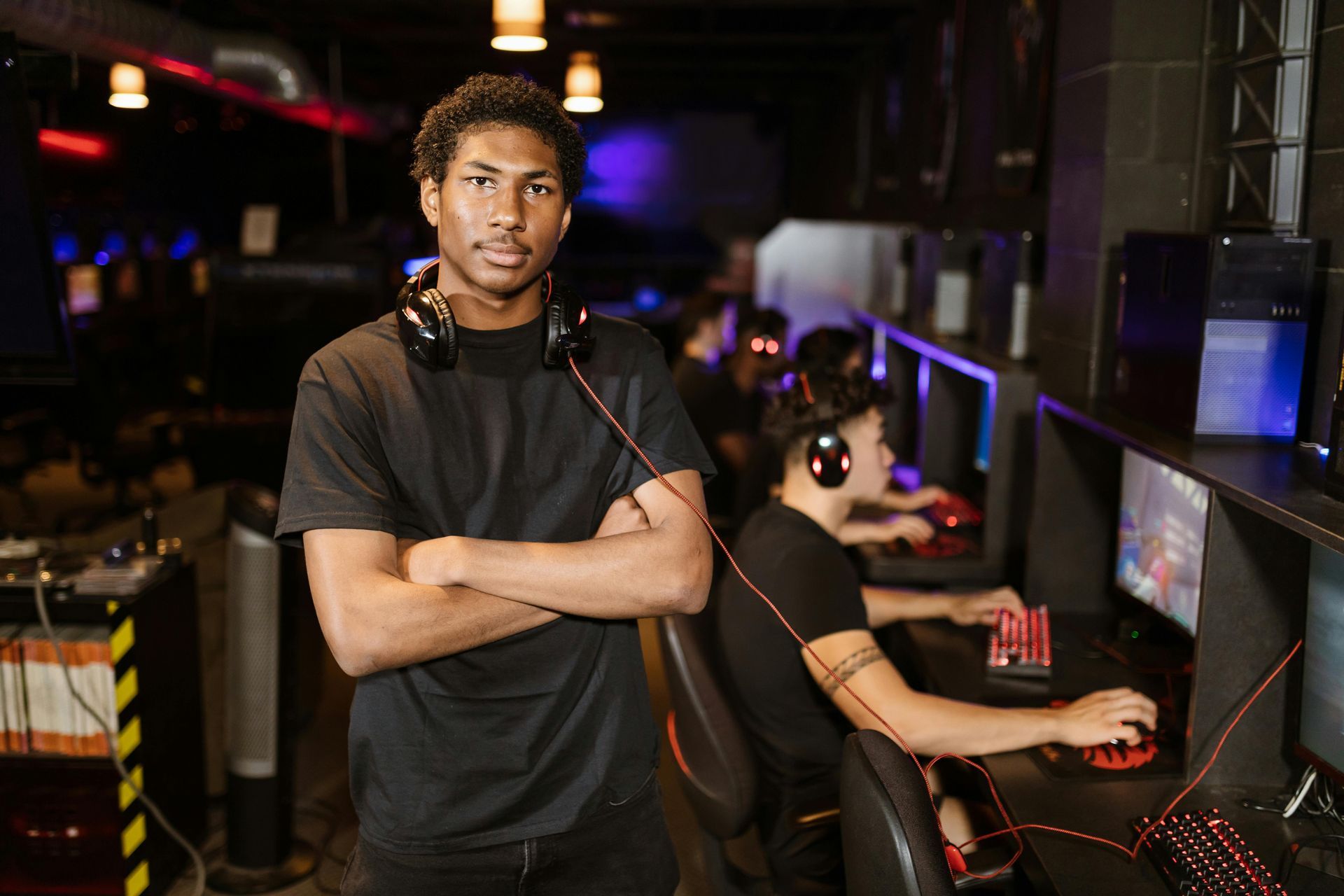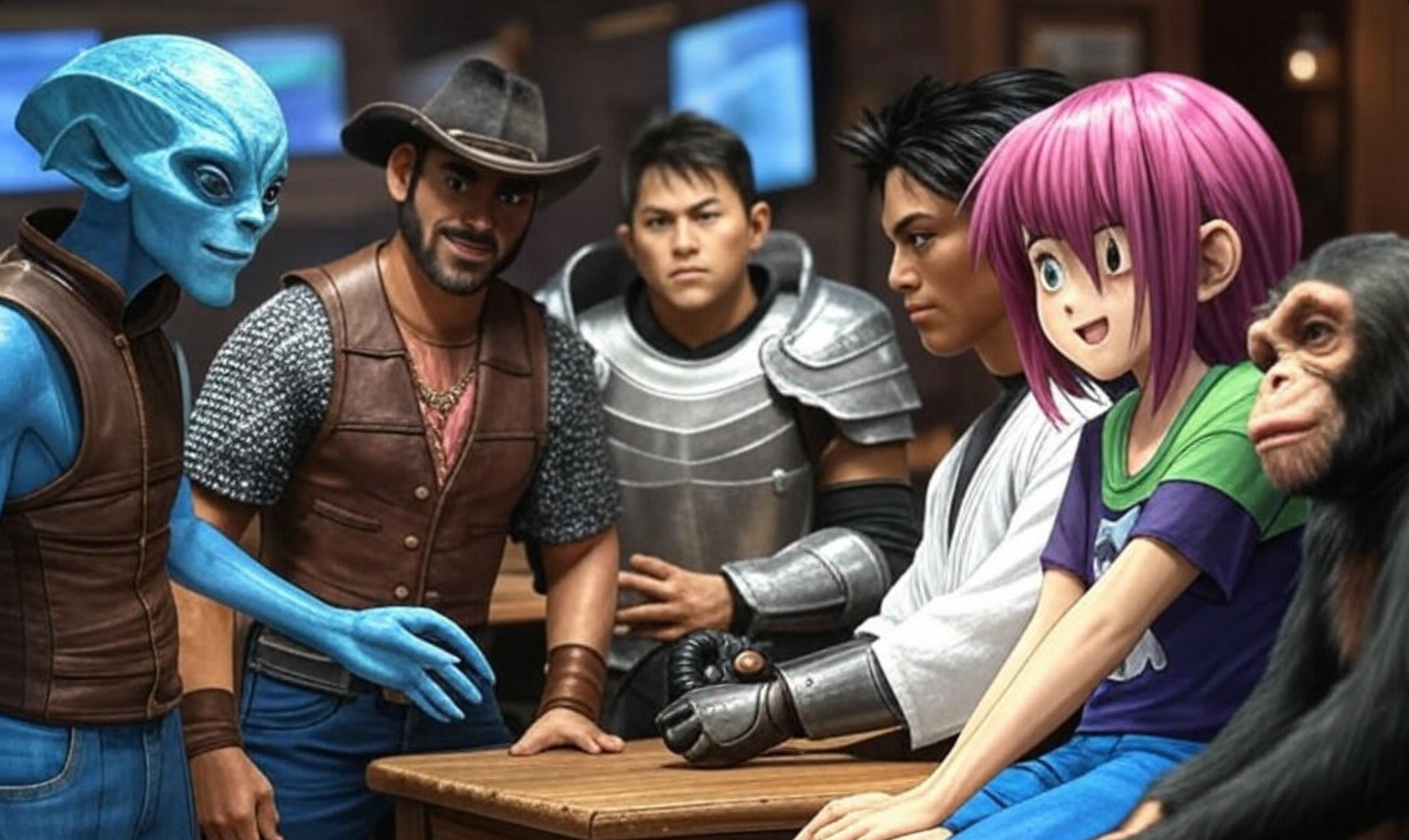How Generative AI is Redefining the Future of Gaming

Redefining the Future of Gaming
The gaming landscape is undergoing a quiet revolution—one where artificial intelligence isn't just assisting developers, but fundamentally transforming how games are designed, played, and experienced.
Across the industry, pioneering studios are leveraging generative AI to push boundaries in ways that were unimaginable just a few years ago. From dynamic storytelling to living, breathing game worlds, these innovations share a common thread: they're putting unprecedented creative power in players' hands while making development more accessible than ever. Let's explore how this technological leap is changing gaming at every level.
The New Storytelling Frontier: Player-Driven Narratives
Traditional game narratives have always operated within fixed parameters—branching dialogue trees that eventually converge, scripted NPC interactions, and carefully curated story beats. But studios like Jam & Tea Studios are rewriting these rules with their upcoming Project Emily, an RPG where the story isn't just branching—it's being written in real time.
"Every story is shaped by the user's actions and words, where their intention has a meaningful impact and the world plays back with the players," explains CEO T. Carl Kwoh .
By using AI to dynamically generate quests, character reactions, and even unexpected items based on player behaviour, Project Emily represents a seismic shift from predetermined narratives to truly organic storytelling. This approach doesn't replace human creativity—it amplifies it. Designers establish the world's framework, then let AI and players co-create the experience. The result? Games that feel less like scripted entertainment and more like collaborative storytelling platforms.
NPCs That Live, Learn, and Remember
Perhaps the most striking application of generative AI is in creating non-player characters with depth and autonomy. Klang Games ambitious SEED project takes this to another level entirely, developing an MMO where thousands of AI-driven characters evolve with true persistence.
"This is massively generated content," says CEO Mundi Vondi . "Imagine what happens when a large group of people create together, where lots of simple acts come together to contribute to something far greater than the sum of its parts."
SEED's NPCs—called Seedlings—begin with 47 core personality traits that dynamically shift based on experiences. A failed harvest might spark innovation or despair; a heated debate could increase aggression while decreasing trust. These aren't cosmetic changes—they fundamentally alter how characters behave, creating ripple effects across the entire game world.
Meanwhile, companies like Bitpart.AI are making this technology accessible to developers of all sizes. Their pre-trained AI characters—from Navy SEALs to bartenders—can be implemented in just 1-2 weeks.
"What this really does is add a brand new and rich dimension to games," explains CEO Jeff Orkin, Ph.D . "It improves replayability and scales up in-game interaction to an unprecedented level."
Democratizing Game Development
Perhaps the most transformative aspect of generative AI is how it's lowering barriers to creation. Buildbox.ai exemplifies this shift with its AI-powered, prompt-based game creation tool that outperforms general-purpose AI models in game development tasks.
"Many of our creators come straight out of Roblox but don't want to deal with the complexities of Unity or Unreal," says CEO Jonathan Zweig .
Their platform allows anyone to generate entire game elements through simple text prompts—whether it's a spooky graveyard environment or complex shooting mechanics.
Similarly, Storycraft is pioneering what they call Player Generated Content (PGC), where the act of playing inherently involves creation.
"Playing Storycraft feels like having the creativity of Minecraft, the personalization of Animal Crossing, with the character-driven quests of D&D," describes CEO Andy Mauro.
Their platform has already seen players collaboratively build intricate worlds with rich, emergent narratives.
The Ethical Dimension
As these technologies advance, studios are grappling with important questions. Klang Games emphasizes their commitment to ethical AI usage, maintaining transparency about how AI shapes their simulation. Bitpart.AI focuses on creating AI that enhances rather than replaces human creativity.
These considerations will only grow more crucial as generative AI becomes more sophisticated. How do we maintain creative vision when so much content is dynamically generated? Who owns AI-created in-game elements? These are questions the industry is just beginning to confront.
The Future Is Already Here
What makes this moment so exciting is that these aren't theoretical applications—they're happening now. Proxima’s Suck Up, which uses voice AI for real-time comedy interactions, has already amassed over 80 million views on TikTok, proving there's massive appetite for these innovative experiences.
As these technologies mature, we're not just looking at better games—we're looking at an entirely new form of interactive entertainment. Games that learn from players.
Worlds that evolve without developer intervention. Stories that literally write themselves based on our choices.
The companies leading this charge understand that generative AI isn't about replacing human creativity—it's about expanding what's possible.
As Carl Kwoh of Jam & Tea puts it: "It's not about replacing traditional design, but rather expanding what's possible: a game that adapts, reacts, and evolves alongside its players."
More to Come...
Beyond the examples already mentioned, numerous other studios are pushing boundaries with generative AI. Hidden Door has created an AI-powered narrative engine that transforms classic story genres into personalized RPG adventures—players can enter a "story world" like Alice in Wonderland and experience unique, dynamically generated quests based on their choices (Hidden Door). Similarly, Latitude AI Dungeon pioneered AI-driven text adventures where players can input any action, and the system generates coherent, open-ended storylines in real-tim.
On the visual side, Scenario enables developers to train custom AI models to generate consistent, stylized game assets—imagine whipping up an entire library of cyberpunk weapons or fantasy armor with a few text prompts while maintaining artistic cohesion (Scenario). Meanwhile, Inworld AI focuses on next-gen NPCs, powering characters with emotional intelligence and long-term memory— Square Enix recently partnered with them to bring AI-driven NPCs to future titles (Inworld case study).
These tools aren’t just for AAA studios. Indie devs are using platforms like Promethean AI to automate environment design or Leonardo.AI to rapidly prototype assets. The common thread? Generative AI is no longer a futuristic concept—it’s a practical toolkit accelerating creativity across the industry. For those eager to experiment, many of these platforms offer free tiers or trials, lowering the barrier to entry for the next wave of groundbreaking games.
It's interesting to see how these experimental tools are quietly becoming part of game development's fabric. As the technology continues to evolve, we're likely to see even more subtle but meaningful shifts in how games are made and played.


